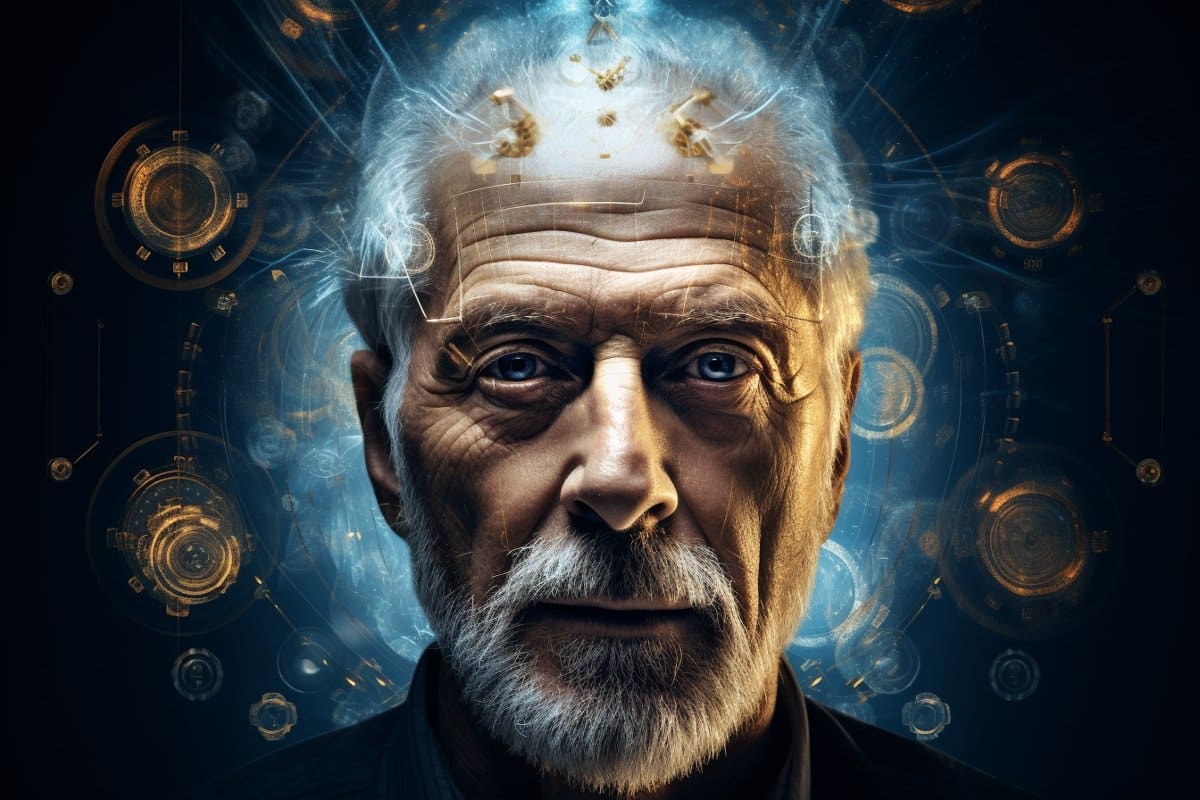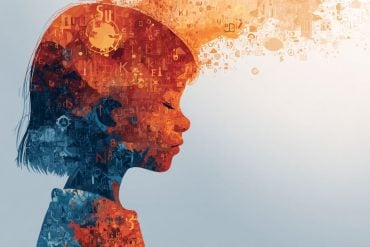Summary: Utilizing artificial intelligence, researchers developed “HistoAge,” an algorithm predicting age at death and unraveling the enigmas of brain aging and neurodegenerative disorders.
By analyzing nearly 700 digitized hippocampal sections from elderly brain donors, the tool forecasts age with striking accuracy and identifies regions susceptible to age-related changes. Remarkably, HistoAge demonstrated a potent correlation with cognitive impairment and Alzheimer’s-type abnormalities, providing a reliable metric for exploring neurodegenerative progression.
This innovative model presents a transformative lens for understanding the aging brain, marking a substantial stride toward decoding and potentially curbing age-accelerated neurodegeneration.
Key Facts:
- Innovative Aging Prediction: The HistoAge algorithm predicts age at death with an average accuracy of within 5.45 years by analyzing the cellular composition of human brain tissue specimens.
- HistoAge and Neurological Associations: HistoAge-based age acceleration shows strong associations with cognitive impairment, cerebrovascular disease, and Alzheimer’s-type protein aggregation, outpacing current age acceleration measures like DNA methylation.
- AI as a Revolutionary Tool: Not only does HistoAge offer a novel paradigm in evaluating aging and neurodegeneration in human samples, but it also brings forward a robust and unbiased metric that is deployable at scale in research labs, thereby facilitating a deeper understanding of cellular changes underlying degenerative diseases.
Source: Mount Sinai
The aging brain undergoes structural and cellular changes that can impact function and increase susceptibility to neurodegenerative disorders like Alzheimer’s disease.
Age acceleration—or the differences between biological and chronological age—in the brain can reveal insights about mechanisms and normal functions of one of the body’s most important organs.

It can also explain age-related changes and functional decline, as well as identify early changes related to diseases, indicating the onset of a brain disorder.
Mount Sinai researchers say they have, for the first time ever, used AI to develop an algorithm they term “HistoAge” which predicts age at death based on the cellular composition of human brain tissue specimens with an average accuracy of within 5.45 years. This powerful tool can also identify neuroanatomical regions vulnerable to age-related changes, an indicator of potential cognitive diseases.
How:
The researchers examined a collection of almost 700 digitized images of slides with human hippocampal sections from aged brain donors to develop the histological brain age estimation algorithm.
The hippocampus is known to be involved in both brain aging and age-dependent neurodegenerative diseases, and thus is an ideal region for this analysis.
The team then trained a machine learning model to estimate a person’s age at death based solely on the digitized section, a task that is impossible for a human observer to perform with any degree of accuracy. They used the difference between the model-predicted age and actual age to derive the amount of age acceleration in the brain.
Results:
When compared with current measures of age acceleration (e.g., DNA methylation), they found that HistoAge-based age acceleration had stronger associations with cognitive impairment, cerebrovascular disease, and the levels of Alzheimer’s-type abnormal degenerative protein aggregation.
The study found that the HistoAge model is a reliable, independent metric for determining brain age and understanding factors that drive neurodegeneration over time.
Why the Research Is Interesting:
The researchers said the HistoAge model, and other subsequent similar algorithms, represent an entirely new paradigm for assessing aging and neurodegeneration in human samples and can easily be deployed at scale in clinical and translational research laboratories. Further, this approach provides more rigorous, unbiased and robust metrics of cellular changes underlying degenerative diseases.
The team will next build a multicenter collaboration to develop a large AI-ready dataset that will be used to develop even more powerful AI models that have the potential to transform and enhance our understanding of brain diseases.
Said Mount Sinai’s Dr. Crary of the research: “AI’s disruptive influence on brain research is a paradigm shift propelling us towards the next generation of cures. The HistoAge model will enable us to uncover crucial causal aspects of debilitating brain diseases such as Alzheimer’s disease.”
Said Mount Sinai’s Dr. Farrell of the research: “Using the latest computational approaches, like AI, on human tissue samples from Mount Sinai’s vast and diverse collections is a shift in the way we assess human diseases. Our novel HistoAge model is just one example of the way AI is paving the way for further discovery about the mechanisms of aging and neurodegeneration.
“Clinical scientists are increasingly using AI in research and diagnostic settings. It’s a tool that is revolutionizing medicine and we are excited to be leaders in this space, optimizing machine learning—not to replace our Health System’s commitment to compassionate care, but to improve diagnosis and treatment for all patients.”
Said Mount Sinai’s Dr. Marx of the research: “This model opens the floodgates for a slew of fascinating and essential analyses that bring us closer to finally understanding the aging brain and age-related brain diseases such as Alzheimer’s. This is the first time we have been able to put a number to how much aging there is in the brain in pathology.
“With this approach, we can discover genes that protect against brain aging or genes that make aging worse in the brain, as well as discover the environmental risk factors that make individuals’ brains age faster.”
Funding: The study was supported by funding from the National Institutes of Health (R01AG054008, R01NS095252, R01AG060961, R01NS086736, P30AG066514, P50AG005138, R01AG062348, U24MH100931, and K01AG070326), Alzheimer’s Disease Research Center (P30 AG066514), the Winspear Family Center for Research on the Neuropathology of Alzheimer Disease, Rainwater Charitable Foundation / Tau Consortium, and a generous gift from Stuart Katz and Jane Martin. Researchers from the University of Pennsylvania and Boston University contributed to this study.
About this AI and brain aging research
Author: Stacy Anderson
Source: Mount Sinai Hospital
Contact: Stacy Anderson – Mount Sinai Hospital
Image: The image is credited to Neuroscience News
Original Research: Open access.
“Histopathologic Brain Age Estimation via Multiple Instance Learning” by John F. Crary et al. Acta Neuropathologica
Abstract
Histopathologic Brain Age Estimation via Multiple Instance Learning
Understanding age acceleration, the discordance between biological and chronological age, in the brain can reveal mechanistic insights into normal physiology as well as elucidate pathological determinants of age-related functional decline and identify early disease changes in the context of Alzheimer’s and other disorders.
Histopathological whole slide images provide a wealth of pathologic data on the cellular level that can be leveraged to build deep learning models to assess age acceleration.
Here, we used a collection of digitized human post-mortem hippocampal sections to develop a histological brain age estimation model.
Our model predicted brain age within a mean absolute error of 5.45 ± 0.22 years, with attention weights corresponding to neuroanatomical regions vulnerable to age-related changes. We found that histopathologic brain age acceleration had significant associations with clinical and pathologic outcomes that were not found with epigenetic based measures.
Our results indicate that histopathologic brain age is a powerful, independent metric for understanding factors that contribute to brain aging.






